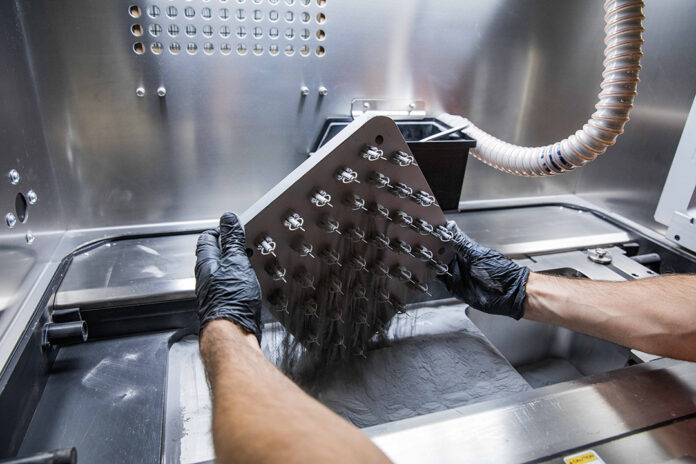In the intricate world of manufacturing and materials science, sintering plays a crucial role in transforming powdered substances into cohesive, solid objects. This process, both ancient and profoundly modern, is at the heart of numerous applications, from the creation of intricate jewelry to the production of complex aerospace components. This blog post aims to demystify sintering, exploring its principles, types, advantages, and the vast array of applications it supports.
The Fundamentals of Sintering
Sintering is a heat treatment process that compacts and forms a solid mass of material by heat and/or pressure without melting it to the point of liquefaction. It involves the application of heat to powdered materials, which causes the particles to bond together at temperatures below their melting points. Through this process, the powdered material’s individual particles fuse to form a single solid piece, embodying increased strength and structural integrity.
How Sintering Works
The sintering process begins with the careful selection and mixing of powdered materials, which are then compacted into the desired shape under high pressure. This green body, as it’s called before sintering, possesses a loosely held form that requires the strength and rigidity only sintering can provide. Upon heating, several phenomena occur at the atomic level:
- Particle Rearrangement: Initial heating leads to particle rearrangement, reducing porosity and increasing density.
- Diffusion Processes: At elevated temperatures, atoms diffuse across the boundaries of the particles, bonding them together more firmly.
- Grain Growth: With continued heat, the material’s grains grow, and porosity decreases further, solidifying the object’s final form and strength.
Types of Sintering
Conventional Sintering
Conventional sintering, often performed in batch or continuous furnaces, applies uniform heat to the green body, allowing for time- and temperature-controlled sintering. This method is widely used for various materials, including metals, ceramics, and plastics.
Spark Plasma Sintering (SPS)
Spark Plasma Sintering utilizes pulsed electric current to rapidly heat the powder compact. This method significantly reduces sintering time, offers precise temperature control, and achieves high-density materials with fine microstructures.
Microwave Sintering
Microwave sintering uses microwave energy to internally heat the material, offering faster heating rates and reduced energy consumption compared to conventional sintering. This method is particularly effective for ceramics and certain metal powders.
Advantages of Sintering
Sintering offers several unique advantages in manufacturing:
- Efficiency and Economy: It allows for the near-net shaping of parts, reducing the need for subsequent machining and material wastage.
- Material Diversity: Sintering is applicable to a wide range of materials, including metals, ceramics, and polymers, enabling diverse applications.
- Enhanced Properties: Products made through sintering exhibit superior mechanical properties, such as increased strength and hardness, due to their dense and uniform microstructure.
Applications Across Industries
The versatility of sintering has led to its application across a broad spectrum of industries:
Automotive Industry
Sintering is used to produce complex parts like gears, bearings, and filters. These components benefit from the process’s ability to create durable, wear-resistant materials tailored to withstand the rigors of automotive environments.
Aerospace and Defense
High-performance materials with specific properties, such as temperature resistance and strength-to-weight ratio, are crucial in aerospace and defense. Sintering facilitates the production of components that meet these stringent requirements.
Medical Devices
The biomedical field utilizes sintering to create implants and prosthetics. The process’s ability to generate biocompatible, porous structures enables the integration of these devices with human bone tissue, promoting better health outcomes.
Electronics
Sintering plays a critical role in electronics manufacturing, used in creating multilayer ceramic capacitors (MLCCs), semiconductor components, and other electronic devices that require precision and reliability.
Aluminum TIG Welding
Aluminum TIG (Tungsten Inert Gas) welding stands as a precision technique pivotal to modern manufacturing processes, complementing the innovation driven by sintering in the realm of material science. The synergy between TIG welding and sintering technologies propels manufacturing toward new horizons, fostering advancements in design and material properties that were once thought impossible.
The Future of Sintering Technology
Advancements in sintering technology continue to push the boundaries of what’s possible in materials manufacturing. Innovations like laser sintering and binder jetting are expanding the applications of sintering into new realms, including additive manufacturing (3D printing). These technologies allow for the creation of components with complex geometries, reduced lead times, and materials that were previously considered unworkable.
Furthermore, ongoing research into sintering processes and materials science is unlocking new potential for this age-old technique, promising even greater efficiency, performance, and sustainability in the future. By improving our understanding of sintering and its capabilities, we solidify not just materials, but the very foundations of modern manufacturing and innovation.
Sintering is a vital process that bridges the gap between powdered materials and solid, functional objects, embodying centuries of knowledge while continuously evolving through technological advances. Its importance cannot be overstated, with applications that span nearly every sector of the industrial world. Understanding sintering is to appreciate the art and science of materials, recognizing its role in crafting the world around us, from the cars we drive to the devices we rely on daily. Solidifying strength through sintering is not just about creating durable objects; it’s about forging the future of manufacturing.
